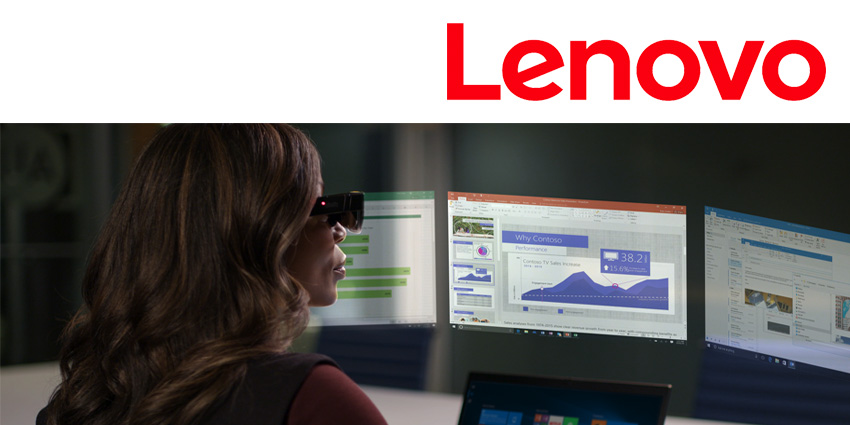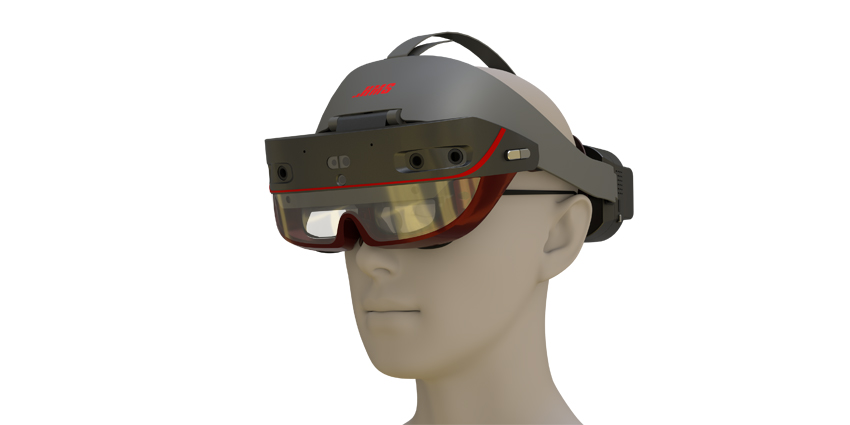We invited Nathan Pettyjohn, Commercial AR/VR Lead for Lenovo PCs and Smart Devices, to shine some light on where the augmented reality marketplace is heading in 2021 and beyond.

As a key figure at ThinkReality, a Lenovo brand dedicated to developing commercial AR and VR solutions for enterprise customers, Pettyjohn has a strong understanding of what is driving the enterprise augmented reality marketplace today.
AR helps users work faster, smarter, safer
According to him, AR has already significantly impacted major industry verticals such as manufacturing, logistics, architecture, engineering, and construction – especially with regards to field-service and deployed workforces on the frontline. He explains:
“When you’re servicing large, expensive equipment that needs to be put together, repaired, or monitored, the ability to have hands free augmented reality that can guide you through these workflows in real-time and both collect and display important data automatically is incredibly valuable”
With AR glasses, industrial workers can complete complicated tasks faster, smarter, and more safely than ever before, helping organizations ramp up production rates while driving down costs.
General industry statistics, according to Pettyjohn, show a range of ROI and KPI improvements. When used correctly, he adds, AR can drop manufacturing error rates to nearly zero, offer 15-35% productivity gains in warehouse picking processes, and deliver a 30-40% decrease in time spent to achieve field service resolutions.
Though ThinkReality is by no means a new project, the upcoming release of its latest enterprise AR smart glasses, the ThinkReality A3, has created lots of excitement since its announcement at CES 2021.
Due for release at the end of Q2 this year, Pettyjohn states the A3 brings to market a truly versatile solution that comes in two separate editions to increase efficiency and productivity in the office, on the industrial floor, and out in the field.
“The PC Edition allows users to connect the glasses to compatible Windows PCs, expanding their workspace with up to 5 virtual monitors, all without needing any extra desk space. These virtual monitors are completely private for the person wearing the A3 smart glasses,” says Pettyjohn. “The Industrial Edition also allows users to connect the glasses to a Motorola cell phone which can be managed and provisioned through the ThinkReality software platform,” he adds.
Mobile First Augmented Reality
Given the huge demand we’re currently seeing for enterprise AR in field-service, it makes sense that Lenovo would create an Industrial Edition to support mobile workers on the go. Likewise, as Lenovo owns Motorola, it came as no surprise to learn the company designed the ThinkRealty A3 Industrial Edition to work exclusively with Motorola handsets – but would this always be the case pushing forward? Apparently, not! Pettyjohn explains:
“Initially, we’re optimizing for Motorola devices. However, we do anticipate in our long-term strategy that the device will work with other Android smartphones, as well”
Considering this, we can assume the trend of mobile-first AR smart glasses will continue to spread throughout the enterprise in the years to come – and Lenovo will be looking to capitalize on that spread by supporting more (if not all) Android devices in the future.
While the XR for the enterprise market is still in its formative stages, it’s becoming apparent the technology will play a massive role in shaping the world of business comms over the next ten years.
According to Pettyjohn, the enterprise AR market is expected to reach between USD 30-40 billion over the next three to four years, with the addition of VR tech increasing that value to as much as USD 100 billion in total.
Customer-centric approach
While this forecasted growth presents a massive opportunity for XR developers like Lenovo to prosper, it also tells us the market will become even more competitive in the years to come. Considering this, we asked Pettyjohn who Lenovo’s biggest competitors in the marketplace are today and how it is setting itself apart from them.
Pettyjohn agreed that there are many competing devices and software in the AR market, but what makes Lenovo’s ThinkReality solutions different is that they offer truly unique end-to-end solutions for their customers.
“We’ve taken a really customer-centric approach to the market, and we don’t look at other developers as competitors, we actually look at them potential partners”
Overall, Lenovo’s ThinkReality strategy provides a total solution that enables large-scale deployments across the enterprise in all work areas – from the home office and corporate desktop out onto the frontline. To do this, Pettyjohn adds, the company embraces “competing” technologies with open arms, supporting and collaborating with them to provide the best possible solution for its customers.
While it’s still too early to predict with any degree of certainty which developers will lead the enterprise AR smart glasses marketplace in the years to come, it’s clear the ThinkReality A3 will have a dominant presence. For more information on all the features and benefits that these smart glasses have to offer, be sure to check out XR Today’s official product review later on this year.







